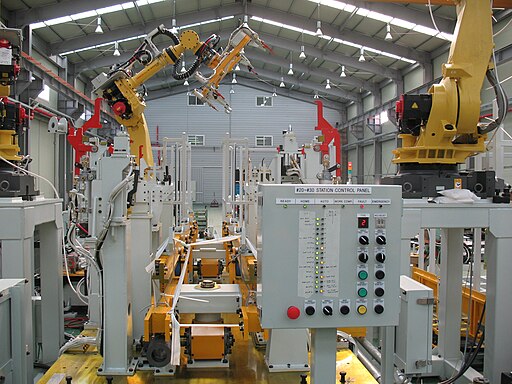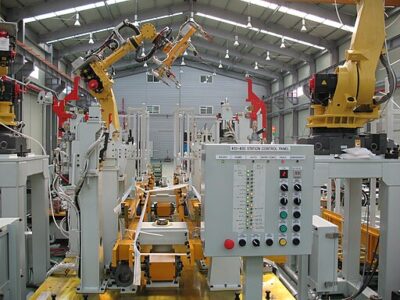- September 6, 2023
- Posted by: David Marshall
- Category: Digital Transformation, Innovation, Leadership

Years ago, when I worked at Robroy, our company never had a proper warehouse management system — software that tracked our inventory and helped us know what we needed to order and what we had too much of. Our raw materials and our products would just sit on the floor and oftentimes got damaged. Not to mention, it usually took seven days just to do an inventory.
So, I decided we would get a rack system in the warehouse to get everything off the floor. The idea was that we could identify the racks and what was on them. At this point in time, we were doing inventory with a pad and pencil, which is nice and cheap but not very accurate. Plus, it’s painfully slow and out of date as soon as new product comes in or goes out.
We interviewed a number of companies that specialized in warehouse management systems, and as we talked, I decided that we were going to do this as an enterprise-wide change, not just for one segment of the business.
After we received all the proposals and had all the interviews, it seemed like everyone else was interested in going with the lowest bid, not the best bid. But I noticed that the owner of this business got on very well with Donna Waterstraat, the woman who would eventually become our operations manager. They were kindred spirits and got on like a house on fire. They were even the most expensive solution, not the cheapest.
We had to have someone who took absolute ownership of the outcome, someone who understood the business and the people, and was willing to learn the system. If we could find that person, we had a winning combination.
That person was Donna, and she took it over, started training people, and got (almost) everyone up and running on the system. And it worked like a dream. She and the company owner became the champions for the system’s success. Together, they were able to make our change successful, and nearly everyone embraced the new software.
Of course, as with any software changeover, your biggest cost is going to be the cost of changing people’s habits. Because people tend to dig in their heels and not look favorably upon any change. Instead, they decide they’re just not going to let it work.
People came up with all sorts of bogus reasons why it couldn’t work, or they couldn’t make it work, or whatever the case may be, which ends up being very expensive and creates all kinds of extra work and headaches for the company and everyone who is already using the software. So that meant we needed to make some changes.
People change or people change
T wo years before that, we switched our ERP (enterprise resource planning) software and received a lot of pushback. I had just joined the company, and people resisted the new software. They kept using the old system and would enter data according to their own whims and standards instead of the standards we had set, or they would just refuse to use the software at all.
wo years before that, we switched our ERP (enterprise resource planning) software and received a lot of pushback. I had just joined the company, and people resisted the new software. They kept using the old system and would enter data according to their own whims and standards instead of the standards we had set, or they would just refuse to use the software at all.
I was thinking about cutting our losses and switching back to the system we had when Billy Traywick sat me down and said that I needed to get my head out of my ass and learn the system. She said I also needed to make sure that everyone else learned the system as well. She had spent months trying to make the switchover and was already using it successfully. The problem was that too many other people weren’t even trying.
She taught me how it worked and got me up and running with it, and then she went to work on everyone else in the company.
To aid in the switch, I required everyone to write a manual about their particular role and how they used the new ERP system. That forced everyone to learn how to use the ERP so they could write their manual correctly. After that, everyone knew how the software worked and was able to do the jobs they were supposed to do.
That led me to embrace the idea that people change or people change.
In other words, people will change themselves and learn the new system, or they will be changed out for someone who wants to.
We found that most people were willing to make the change, but about ten percent of them were not. So they self-selected out of the company.
Rather than firing them, we told them they had to meet certain performance criteria by a certain deadline. And if they didn’t meet those standards or the deadline, they had to go. The ones who wanted to stay and learn the system easily met the standards; the ones who didn’t, didn’t.
The bottom line was that we improved our overall efficiency and found that we were not only able to get more done, we were able to improve our profits. For one thing, we realized the number of people we didn’t need because they weren’t adding value. For those who self-selected out, we didn’t even need to replace them. If necessary, we could reassign someone to that role.
We also reduced our costs by not double-, triple-, or quadruple-ordering stuff that we weren’t previously able to find. With the new warehouse management software system in place, we knew how much we had of each item and where it could be found.
Be responsible for your own change management
Many corporations have changed from their legacy ERP systems to a new system, like SAP or Oracle. Except the changeover fails because they hired a bunch of high-priced consultants to come in and try to do it for them.
These companies are often the best in the world at what they do, but they lack an internal champion and buy-in from top leadership. They let the consultants teach classes about how to use the new software, but they’re not able to enforce the learning and changeover the way we did at Robroy.
So their changeovers fail spectacularly, and they end up switching back to the old system and its inefficiencies. Or they use the new ERP software but never fully understand how it works, and the system bogs down.
Bottom line: When you make major changes to your software or other processes, be sure you have three things:
- Leadership buy-in
- An internal champion
- A knowledgeable outsider
With all of that, your changeover will be relatively painless and fast. Plus, you’ll find out who your superstars and your slackers are.
I’ve been a manufacturing executive, as well as a sales and marketing professional, for a few decades. Now I help companies turn around their own business, including change management. If you would like more information, please visit my website and connect with me on Twitter, Facebook, or LinkedIn.
Photo credit: Mixabest (Wikimedia Commons, Creative Commons 3.0)

